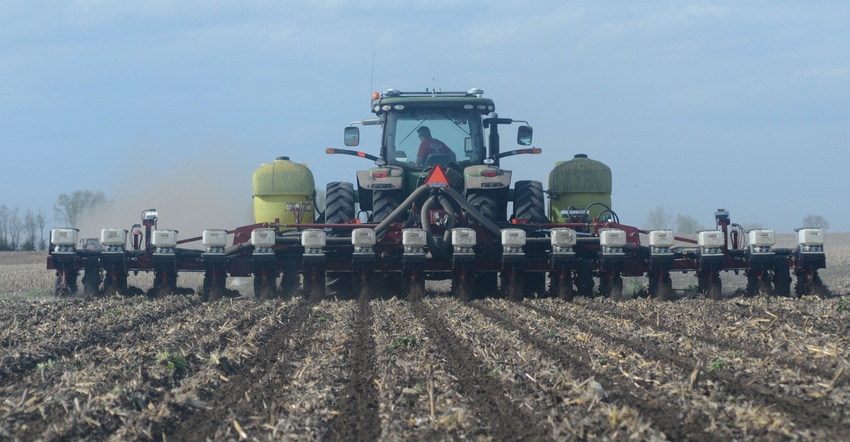February 11, 2021

It can be argued that planting is the most important farming operation. If we mess something up at planting, that mistake can come back to haunt us the rest of the growing season. It is believed the first corn planter was patented by Henry Blair, an African-American inventor back in 1834. Since then, there have been many advancements in planter technology to improve planting efficiency and increase crop yields. The role of a planter is to help optimize planting depth and seed spacing.
In the last 15 years, planter attachments and technologies have really exploded. Today's largest planter is 120 feet wide and is capable of planting approximately 100 acres per hour. These advancements in planter size and technology provide the ability to plant a lot of acres in a short amount of time. However, even with these advancements, it is still important to go back to the basics when it comes to planter setup.
Before going to the field, prevent potential planter malfunctions by checking over all parts of your planter. Replace any parts showing wear. Once we are in the field, take time to get out and check behind the planter to see how things are going. We cannot just rely on the monitor to look for issues or mistakes.
Check your planting depth
One of the factors that greatly impacts the uniformity of a corn stand is planting depth. We all strive for uniform planting depth and emergence. So, we need to spend some time checking behind the planter for consistent planting depth. Corn was designed to have soil cover the seed to allow for growth of the radical root to anchor the seed followed by the coleoptile or spike a day or two later, strictly based on the soil temperature.
The next rooting structures to emerge are the lateral seminal roots. These roots perform best when covered by about three-quarters to 1 inch of soil to protect them from drying out and slowing growth. If you were building a house in Iowa, it is best to pour footings below the frost line to prevent heaving of the structure. The same principal applies here.
I would select hybrids that have good emergence at the 2-inch soil depth for the soil types you intend to plant them on. When planting corn 2 inches deep, those seedlings have less fluctuation in soil temperature than seedlings planted shallower. In addition to making sure we are getting seeds planted at the appropriate depth, we also want to make sure that the planting depth is consistent, as uneven planting depths can cause issues with uneven emergence. Yield losses from uneven planting depth can range from 8% to 10 %.
Don't forget seed singulation
Seed spacing is also important, as doubles and skips can cost us yield. Recent work from North Dakota State University showed plants that were planted as doubles combined to yield 136% of normal — one plant yielded 86% of normal yield, and the other only 50% of normal.
This study also found that plants emerging one week late can suffer a yield loss of up to 59%. We can debate how much yield loss singulation issues can cause all day long, but let's say if you are experiencing less than 95% singulation emergence, you are leaving yield potential behind.
The largest factor affecting singulation is the seed meter. Proper calibration and maintenance of the seed meter unit is critical. Other factors that can impact singulation include keeping the planter level, having correct down-pressure settings, and experiencing wear-and-tear on disk openers, wavy coulters and closing wheels.
As you head out to the fields this spring, take time to check behind your planter and get some dirt under your fingernails. Also, keep field conditions in mind. Ideally, we would like soil temperatures to be 50 degrees F and warming before starting to plant corn, and 55 degrees and warming for soybeans. Don't forget soil moisture conditions.
Saeugling is an Iowa State University Extension field agronomist.
About the Author(s)
You May Also Like






